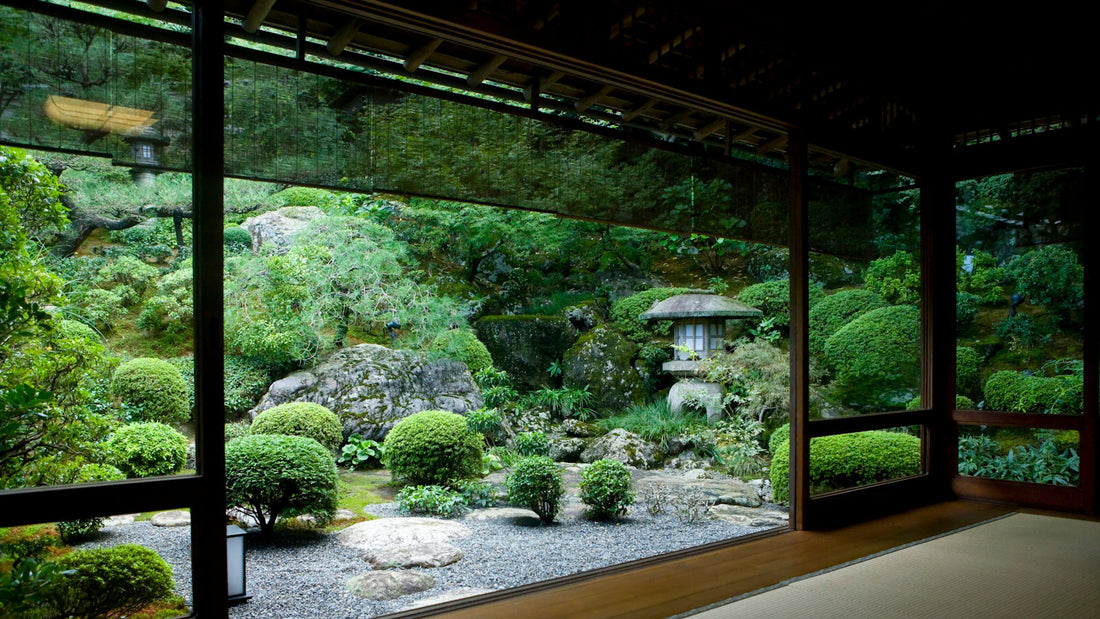Embarking on a journey through Japanese aesthetics is like stepping into a world where nature, art, and tranquility blend seamlessly. Japanese culture has long been celebrated for its unique approach to design, which is evident in its gardens, ornaments, and lighting. In this blog, we will explore the beauty of Japanese aesthetics, starting from the enchanting Japanese gardens and gradually making our way to the exquisite Japanese lamps.

The Allure of Japanese Gardens
Japanese gardens are a living testament to the country’s deep - seated respect for nature and its ability to create harmony in every aspect of life. These gardens are not just collections of plants and rocks; they are carefully crafted landscapes that tell a story.
The Elements of a Japanese Garden
At the heart of a Japanese garden are several key elements. Water is a fundamental component, representing purity and the flow of life. A pond or a stream can add a sense of tranquility and movement to the garden. Rocks, on the other hand, symbolize stability and permanence. They are often arranged in groups to mimic natural mountain ranges or islands.
Plants in a Japanese garden are chosen for their beauty and symbolism. Cherry trees, with their delicate blossoms, represent the transient nature of life. Bamboo, known for its strength and flexibility, is another common plant. It sways gently in the breeze, creating a soothing sound.
Japanese Garden Ornaments
Japanese garden ornaments play a crucial role in enhancing the overall aesthetic of the garden. One of the most iconic ornaments is the tōrō lantern. These lanterns come in various shapes and sizes, from simple stone structures to more elaborate designs. They are strategically placed throughout the garden to provide soft, diffused light at night, creating a magical atmosphere.

Another popular ornament is the tsukubai, a stone water basin. It is often used in tea ceremonies and is designed to be a place for purification. The basins are usually adorned with a ladle, and the act of scooping water from the basin is a ritualistic gesture.
Koi ponds are also a common feature in Japanese gardens. The colorful koi fish swimming gracefully in the water add a touch of liveliness and color to the otherwise serene landscape.
The Aesthetic Principles of a Japanese Garden
Japanese gardens are based on several aesthetic principles. One of the most important is the concept of “wabi - sabi,” which celebrates the beauty of imperfection, simplicity, and the passage of time. In a Japanese garden, you may notice that the rocks are not perfectly shaped, and the plants are allowed to grow in a somewhat natural, unkempt way. This is in contrast to the more formal and manicured gardens found in other cultures.
Another principle is “ma,” which refers to the space between objects. In a Japanese garden, the empty spaces are just as important as the filled ones. They allow the eye to rest and create a sense of balance and harmony.
Japanese Garden Decor: A Reflection of Culture
Japanese garden decor is not just about adding visual appeal; it is also deeply rooted in the country’s cultural and spiritual traditions.
Symbolism in Japanese Garden Decor
Many elements in Japanese garden decor carry symbolic meanings. For example, the crane is a symbol of longevity and good fortune. You may find crane - shaped ornaments or statues in a Japanese garden, representing the hope for a long and prosperous life.
The turtle is another symbol commonly found in Japanese gardens. It symbolizes wisdom and stability. Turtles can be represented in the form of stone sculptures or as part of a water feature.
The cherry blossom is perhaps one of the most well - known symbols in Japanese culture. It represents the transient nature of life and the beauty of the present moment. Cherry blossom trees are often the centerpiece of a Japanese garden in the spring, when their pink and white blossoms create a breathtaking sight.
The Role of Color in Japanese Garden Decor
Color is used sparingly in Japanese garden decor. Earthy tones such as brown, green, and gray are predominant, reflecting the natural colors of the landscape. These colors create a sense of harmony and blend in with the surrounding environment.
However, pops of color can also be added through the use of flowers or decorative elements. For example, a red - painted gate or a brightly colored koi fish can add a touch of vibrancy to the otherwise muted palette.
Japanese Lamps: A Fusion of Tradition and Modernity
Japanese lamps are a perfect example of how Japanese aesthetics can be translated into functional objects.
The History of Japanese Lamps
The history of Japanese lamps dates back centuries. Washi paper floor lamps, in particular, have a long - standing tradition. Washi is a type of traditional Japanese paper made from natural fibers such as mulberry bark. These lamps were originally used in traditional Japanese homes to provide light during the night.

Over time, Japanese lamps have evolved to incorporate modern design elements while still maintaining their traditional charm. Today, you can find Japanese lamps in a variety of styles, from minimalist and contemporary to more ornate and traditional designs.
The Design Features of Japanese Lamps
One of the most distinctive features of Japanese lamps is the use of natural materials. In addition to washi paper, wood and bamboo are also commonly used. These materials not only give the lamps a warm and organic feel but also make them environmentally friendly.
The design of Japanese lamps often emphasizes simplicity and functionality. Many lamps have a clean, geometric shape, with smooth lines and a lack of excessive ornamentation. The focus is on the quality of the materials and the way the light is diffused.
The Function of Japanese Lamps
Japanese lamps are not just for illumination; they are also used to create a specific atmosphere. The soft, diffused light from a washi paper table lamp can create a warm and cozy environment, perfect for relaxation. In a living room, a Japanese lamp can serve as a focal point, adding a touch of elegance and sophistication.

In a bedroom, a Japanese lamp can provide a gentle, soothing light that helps to promote sleep. The warm glow of the lamp can create a peaceful and serene atmosphere, similar to the way a Japanese garden can make you feel at peace.
Conclusion
Japanese aesthetics, whether in the form of a garden, garden ornaments, or lamps, offer a unique and profound experience. They teach us to appreciate the beauty of nature, the importance of simplicity, and the value of tradition.
By incorporating elements of Japanese aesthetics into our own lives, we can bring a sense of tranquility and harmony into our homes. Whether it’s a small Japanese garden ornament on a windowsill or a beautiful washi paper lamp in a living room, these objects can serve as a reminder of the rich cultural heritage of Japan and the timeless beauty of its design principles. So, take a journey through Japanese aesthetics and discover the magic for yourself.


















































